Do you want to know all about the Lavender Orpington Chickens? It is an excellent lavender color chicken breed that will beautify your backyard and warm your heart.
If you want to raise a beautiful Lavender plumage chicken breed, you’ve come to the right place. We love to tell you about the Lavender Orpington, a beautiful variety of the heritage Orpington chicken breeds.
The Lavender Orpington chickens are friendly, gentle and have an impressive egg-laying ability. They come from the beautiful village of Orpington, England, and are beloved members of many flocks.
Lavender Orpingtons have a story because of their unique coloration. Here you will discover their lifespan, temperament, and appearance and learn how to care for these lovable birds.
We’ll also explain common health concerns and answer your burning FAQs, providing the information you need to embark on your Lavender Orpington adventure.
Also read: Know all about Orpington chickens
What Are Lavender Orpington Chickens?
Are you looking for a pretty chicken breed? The Lavender Orpington chicken might be a good choice. It’s a rare color of the Orpington breed.
Lavender Orpingtons are friendly birds. They stay calm and lay lots of eggs. You can get around 200 eggs from each hen per year. They are also good for meat.
Unlike blue or purple chickens, Lavender Orpingtons have lovely lavender-colored feathers.
These chickens are great for backyard flocks. They work well for people just starting out with chickens, or for experts too.
History and Origins of Lavender Orpington Chickens
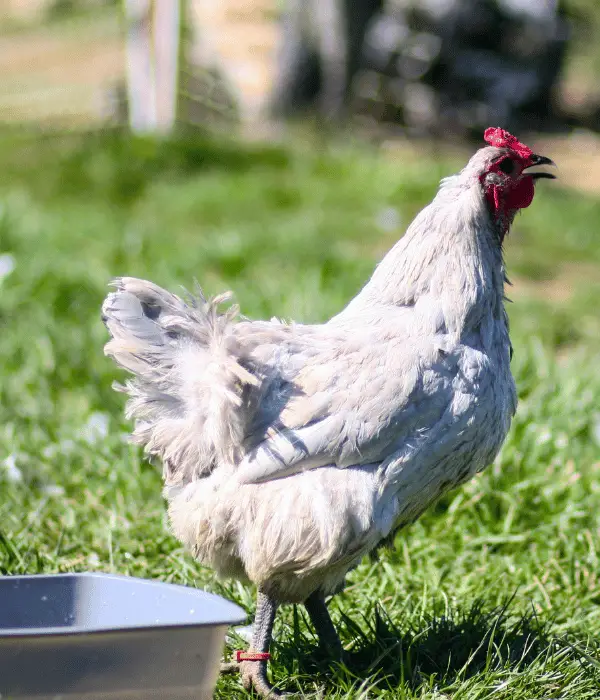
The Lavender Orpington is a new kind of chicken. It comes from the Orpington breed that William Cook made in the late 1800s. William wanted a chicken that could give both meat and eggs, and also look really nice.
He mixed different chicken breeds to make the first black, white, and Buff Orpington chickens. These chickens became very popular in Britain and America.
The Lavender Orpington is also called the self-blue Orpington. This is because its lavender color comes from a special gene that makes any black color in the feathers look lighter. For a chick to be lavender, both parents must have this gene.
This lavender color is not really purple. It is a soft gray with a pinkish tint. This makes the Lavender Orpington look very pretty and unique.
Priscilla Middleton in England and John W Blehm in America first made the Lavender Orpington in the late 1990s. They bred black Orpingtons with lavender genes from other breeds like Araucanas and Dorkings.
After that, many breeders worked hard to make the breed even better. They made sure the Lavender Orpington had special looks that made it different from other chickens.
I find the Lavender Orpington very interesting. The soft lavender color is really eye-catching and makes the chicken look almost magical. I would love to have a few of these chickens in my backyard one day.
The Temperament of Lavender Orpington Chickens
The Lavender Orpington chickens are calm and friendly birds. They get along well with other chicken breeds and love exploring and foraging together.
These chickens are gentle and laid-back. They adapt easily to different climates and environments. Some owners say they are as smart and friendly as Golden Retrievers.
The roosters and hens have similar personalities, but roosters can be more protective of their flock. They might crow loudly, especially in the morning.
The hens are calm and cuddly. They often want to sit on eggs to hatch them, even if the eggs are from other hens.
Are Lavender Orpington chickens easy to raise?
Yes, they are easy to care for. They don’t need much space or special care. You can keep them with other friendly chicken breeds.
Lavender Orpingtons are also hardy and productive birds. They lay high-quality eggs and provide plenty of tasty meat.
The Lifespan of Lavender Orpington Chickens
Lavender Orpington chickens are special birds. They can live a long time when compared to other chicken breeds.
With good care and healthy living, a Lavender Orpington chicken can live for 8 to 10 years. But, some chickens may live longer or shorter depending on their health and living conditions.
Most chickens can live long lives if we give them good food, cozy coops, keep them safe from wild animals, and get them shots to stay healthy.
The Appearance of Lavender Orpington Chickens
Lavender Orpington chickens have a special look that catches your eye. Their medium-sized comb stands tall on their head, like a small crown. This upright comb is the most common type.
The comb’s color is usually a bright red. It matches the medium-sized wattles that hang down on both sides of their beak.
While combs can differ a bit, the single upright comb is most common for Lavender Orpingtons. Its medium size and red color match the wattles that dangle neatly on either side of their beak.
Lavender Orpingtons have small, oval-shaped ear lobes. These are often a light pink or white color.
Their sturdy legs and feet are a medium size. The gray legs blend nicely with their feather colors. And their toes are straight and evenly spaced.
The beak itself is black or a mix of black and pale yellow, depending on the bird. It has a medium length and a slightly curved shape.
Size and Weight of Lavender Orpington Chickens
Lavender Orpington roosters are big in size and shape. They stand between 24 and 26 inches tall from their feet to the top of their comb.
These roosters weigh between 8 and 10 pounds. Their big comb and wattles make them look important and strong. Some roosters even have spurs.
The hens are a bit smaller but still look nice. They are between 20 and 22 inches tall. They have a wide, heavy body that sits low to the ground.
Hens of this breed weigh between 6 and 8 pounds. Their size makes them good at laying eggs and being mom hens.
Lavender Orpington chicks are tiny and cute. They don’t look like the big adult birds. The chicks start at around 1.2 ounces in weight.
They are just a few inches tall. In a few weeks, the chicks grow feathers. They start to look like small Lavender Orpingtons with the same lavender-gray color.
Egg Production
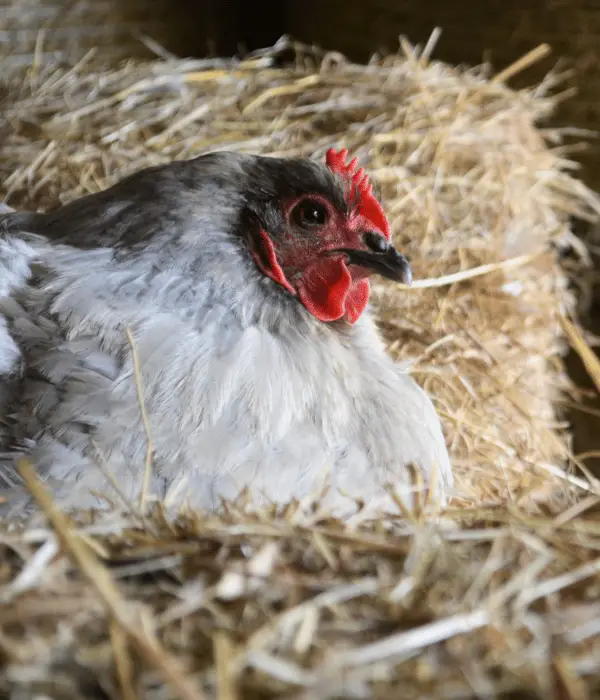
Lavender Orpington chickens have a striking look and are excellent egg layers. These birds lay plenty of eggs each year.
Lavender Orpington hens usually start laying eggs when they are 5 to 6 months old. How soon they begin can vary based on their diet, housing, and genetics.
While some hens may lay earlier, others take more time to mature and start laying eggs. These hens are excellent layers and provide lots of eggs during their prime laying years.
On average, a Lavender Orpington hen can lay 200 to 280 medium to large brown eggs per year. Their eggs have a lovely, warm, earthy color that many find appealing.
With a few Lavender Orpington hens, you’ll always have a steady supply of fresh eggs for your household. You may even have enough extra eggs to sell due to their high yearly production.
The earthy tones of their eggs are popular with chicken enthusiasts and customers alike. The size is generally medium to large, with each egg weighing around 2 to 2.5 ounces.
Lavender Orpingtons birds also want to sit and stay on nests full of eggs. They hope to help eggs hatch into baby chicks. This trait can be good if you wish to let eggs hatch safely.
have you ever seen a mother hen sitting on her eggs? This means the hen wants to take care of eggs until they hatch into chicks. We call this “broodiness” when hens feel like keeping eggs warm.
When a hen feels broody, she may stop laying new eggs for some time. She stays focused on keeping the nest eggs safe and warm.
If you don’t want those eggs to hatch, give the broody hen a quiet, cozy spot to rest. This may help calm her broodiness after a while.
Feeding and Care of Lavender Orpington Chickens
Indeed, here’s a detailed breakdown of the feeding and care points specific to Lavender Orpington chickens:
1. Quality Nutrition
Good food helps chickens like Lavender Orpingtons stay fit. These birds need a special chicken feed made just for laying eggs. This feed has protein, vitamins, minerals, and calcium to keep the chickens healthy and strong.
The feed provides the right nutrients chickens need to produce eggs well. It also helps them stay active and energetic throughout the day. Choosing the right feed is important for raising healthy chickens that lay many eggs. With proper care and diet, these chickens will stay lively and lay eggs regularly.
2. Fresh Water
Chickens need lots of water to stay happy and healthy. Make sure your Lavender Orpingtons always have fresh, clean water to drink. Having enough water helps them lay tasty eggs. A special chicken waterer is a good idea. It keeps the water flowing, so your flock can drink whenever they feel thirsty.
3. Grit and Oyster Shells
Chickens need a bit of grit to help their gizzard grind up food. This rough material helps break down what they eat. You can offer insoluble sand or small rocks.
Eggshells contain calcium that hens require for strong eggshell production. Provide crushed oyster shells or dried, crushed egg
4. Treats in Moderation
Chickens like treats. But, too many treats can make them sick. Give chickens treats like veggies, fruits, and grains sometimes. But, not too much. Keep treats under 10% of their food. That way, chickens stay healthy.
5. Coop and Run Space
Give them lots of room to move around and do chicken things. Make sure each bird has 4 to 5 square feet of space in their coop. Also, let them explore an open outdoor area. Chickens love stretching their legs and scratching in the dirt. And don’t forget about dust baths! Chickens
6. Roosting Bars
Every chicken must have a safe spot to sleep. Set up strong little bars inside the chicken coop. Each bird needs its own space on the bars at night. They need room to sit without other birds touching them. Roosting bars let chickens rest in peace. The bars help your chickens sleep well. Chickens like to roost up high while relaxing and napping.
7. Nest Boxes
Having a good place to lay eggs is key for happy hens. Lavender Orpington hens need a cozy, quiet nesting box. The bedding inside the coop should be soft and clean. Good choices are straw, wood shavings, or hulls. There are also special chicken nesting pads you can buy. Some can be washed when dirty.
8. Clean Coop and Run
Always keep the chicken coop and run space neat and tidy. Cleaning often stops a big mess from piling up. This helps the birds stay healthy. Chicken poop and old food draw bugs. Too much waste makes it smells bad.
Regular cleaning keeps sickness away from your feathery friends. To clean, remove poop and leftover food daily. Once a week, fully change the bedding at the bottom. Birds feel co
9. Protection from Predators
Lavender Orpingtons are calm chickens. But this makes them easy targets for hungry predators. You need to make sure their chicken coop is safe.
Cover any gaps with strong wire mesh. Also lock the coop at night to keep these gentle birds secure and sound. This protects your Orpingtons from sneaky foxes, raccoons, and other predators.
10. Social Interaction
Lavender Orpingtons are great birds to have around. They really like spending time with others. To make sure these birds are happy, it’s best to have two or more. That way, they can have fun around with feathered friends. A lonely bird can get sad and stressed. But with a little buddy flock, they forage happily.
11. Monitor Health
It’s vital to regularly check on your Lavender Orpingtons. Keep an eye out for any changes in how they act, eat, poop, or look. If you notice anything odd, it could be a sign of illness or stress. Watch closely, as small differences can cause major health issues. Contact your vet in emergency situations.
12. Provide Dust Baths
Lavender Orpington chickens enjoy taking dust baths. These dust baths help keep their feathers clean and free from tiny bugs. Make sure to give these birds a special area with loose soil or sand.
This area lets them take dust baths whenever they want. Caring for these chickens requires meeting their needs. You must also keep in mind their calm nature and their egg-laying skills.
Lavender Orpington Roosters Vs. Hens
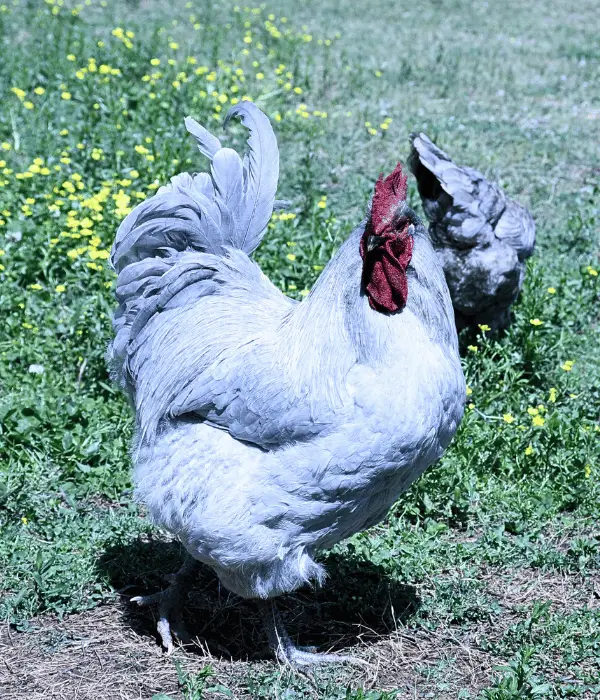
A male Lavender Orpington chicken is called a rooster. It weighs about 10 pounds when fully grown. A female chicken is called a hen. Hens weigh around 8 pounds.
Roosters have bigger red combs and wattles on their heads than hens. Their necks and tail areas have longer and brighter feathers.
Roosters act more aggressive and protective of their territory. They strut around and make a loud “cock-a-doodle-doo” sound called crowing.
A rooster’s feathers shine more compared to a hen’s feathers. Its neck and tail feathers are extra bright and colorful.
Roosters can be a problem in towns and cities. They crow loudly, which can bother people. Hens do not make this noise. A rooster has bigger, stronger feet and legs than a hen.
Raising and Breeding Lavender Orpington Chickens: Your Guide to Success
Lavender Orpington chickens are pretty birds. Raising them is hard work, but fun too. If you want to raise these purple chickens, here’s what to know. Breeding the birds takes effort. But many people enjoy having them.
Nature’s Way of Breeding
Raising Lavender Orpington chickens is a simple task. If your flock includes roosters (male chickens) and hens (female chickens), they will mate. The hens will then lay fertilized eggs. Mother hens are nurturing birds. They will sit on the eggs and provide warmth until they hatch, just as nature intended.
Boosting Success with Incubators
Hatching chicken eggs at home is fun! But to boost your chances, use an incubator. It controls the warmth and wetness needed for eggs to grow chicks. An incubator is like a robo-momma hen!
Getting Ready with Knowledge and Experience
Keeping chickens can be a fun thing to do. But you need to know how to take care of them well. Healthy chickens will give healthy baby chicks. So, you must check on their health and give them good food. It’s like taking care of a big family of feathery friends.
Keeping Everyone Healthy
You go to the doctor to get check-ups and shots, right? Well, chickens need regular check-ups too! Looking at your chickens often helps you see if anything’s wrong early on.
Just like shots help keep you healthy, chickens need vaccines. Vaccines act like a superhero shield, protecting chickens from getting sick.
Growing a Happy Flock
Keeping Lavender Orpington chickens is fun. They are like nice friends that give eggs to you. You must make sure they have tasty treats, good feed, and space to play. They enjoy taking dust baths and exploring around, so giving them space makes them joyful.
Unleash the Possibilities
Raising Lavender Orpington chickens is an amazing experience. It lets you be part of nature’s story. You get to help create more of these feathery friends. That’s pretty cool.
Even though it seems like a lot of work, you’re giving these birds a great life. That’s beautiful. So, get ready to dive into the fun world of Lavender Orpingtons! It’s a journey filled with joy and feathery fun!
Comparing Lavender Orpingtons to Other Chicken Breeds
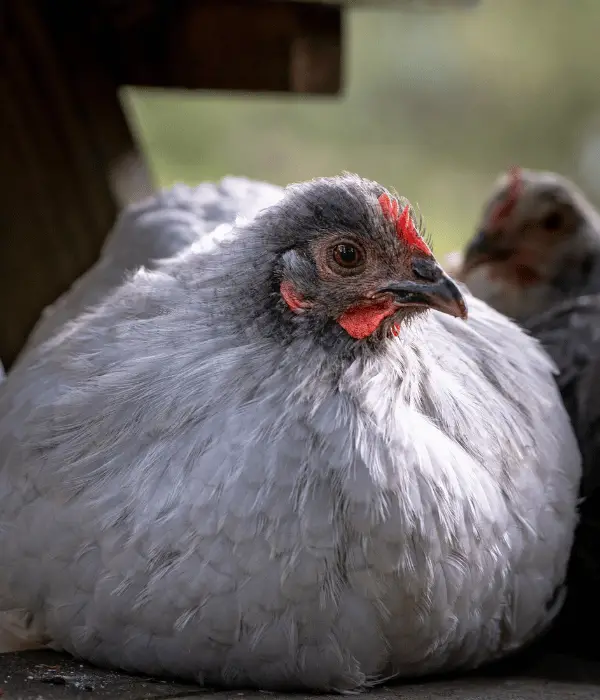
Lavender Orpington chickens are special birds. These chickens have lavender-gray feathers. Their color is one of a kind. No other chicken breed looks like them.
They are bigger than most chickens. They have heavy, solid bodies. This makes them great for meat. Their large size makes them stand out from other breeds.
These chickens lay lots of eggs. Each year, they can lay around 200 eggs. This is more than many other chicken breeds. If you want fresh eggs often, Lavender Orpingtons are an excellent choice.
Lavender Orpington chickens have calm personalities. They are friendly and gentle birds. This makes them ideal for families with kids. Children can interact with these relaxed chickens safely.
Common Problems And Health Issues in Lavender Orpingtons
Like other chicken types, Lavender Orpington chickens may face some health problems. It’s crucial to check your birds often for any sickness signs and give them the proper treatment.
One common issue with Lavender Orpington chickens is being overweight. These big birds have big appetites. Feeding them too much can make them gain too much weight and have other health troubles.
Parasites like worms are another frequent problem for Lavender Orpington chickens. Giving them deworming medicine regularly is needed to keep them healthy and free of worms.
Breathing issues can also affect Lavender Orpington chickens. If you see signs like wheezing or trouble breathing, get advice from a vet right away.
Other FAQs About Lavender Orpington Chickens
There are several common questions that people often ask about Lavender Orpington chickens. Here are some of them:
Are Lavender Orpington Roosters Aggressive?
Lavender Orpington roosters have a friendly nature. Unlike some other breeds, they tend to be calm and peaceful. This makes them a good choice for homes with kids and families who want a happy poultry yard. Lavender Orpingtons are not known for being mean or aggressive.
What Does a Lavender Orpington Chicken Look Like?
Lavender Orpington chickens have a unique gray color. They have a big, heavy body that stays close to the ground. These birds have big wings that stick out. They also have bright red combs, wattles, and earlobes. This red color looks nice with their gray feathers.
Are Lavender Orpingtons Friendly?
Lavender Orpington chickens have a unique gray color. They have a big, heavy body that stays close to the ground. These birds have big wings that stick out. They also have bright red combs, wattles, and earlobes. This red color looks nice with their gray feathers.
What Do Lavender Orpington Chicks Look Like?
The Lavender Orpington chicks arrive as cute, fuzzy balls of soft gray fluff. They grow very fast in their first few weeks. As they get older, their special lavender color gets brighter and brighter. This lovely shade of purple is what makes these chickens stand out from the rest.
Are Lavender Orpington Chickens Rare?
Lavender Orpington chickens are a special kind of bird. These chickens come from England. They are not as common as some other chicken types. This makes them extra special for people who like rare chickens.
Where to Buy Lavender Orpington Chicks?
You can get Lavender Orpington chicks from good chicken farmers or websites that sell chicks online. But it’s important to make sure the place you’re buying from takes good care of the chicks and keeps them healthy.
Are Lavender Orpingtons Broody?
The answer is yes. Lavender Orpington hens have a strong drive to be mothers. They want to sit on their eggs and help them hatch. After the chicks are born, the hens take good care of them. Lavender Orpingtons are caring and nurturing birds.
Are Lavender Orpingtons Good Layers?
Lavender Orpington hens are great at laying eggs. They lay around 200 eggs each year. This is more eggs than many other chickens lay. These hens are a good choice for people who want fresh eggs and a nice pet chicken.
Conclusion: Why Choose Lavender Orpington Chickens?
Adding new feathered friends to your home? Think about bringing in Lavender Orpington chickens. These birds have a pretty look and also lay lots of eggs.
Lavender Orpingtons are known for being very friendly. They give many eggs and have strong bodies. That makes them ideal for getting both meat and eggs.
It doesn’t matter if you’re an expert at keeping chickens or just starting out. Lavender Orpington chickens will make you happy. Their special traits are loved by bird fans.
Why wait any longer? Get your journey going with Lavender Orpington chickens right now!
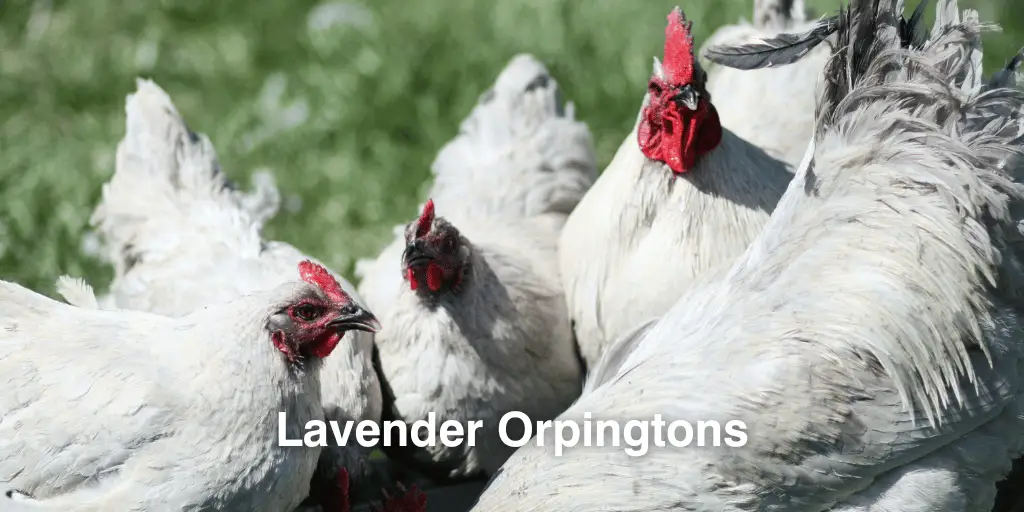

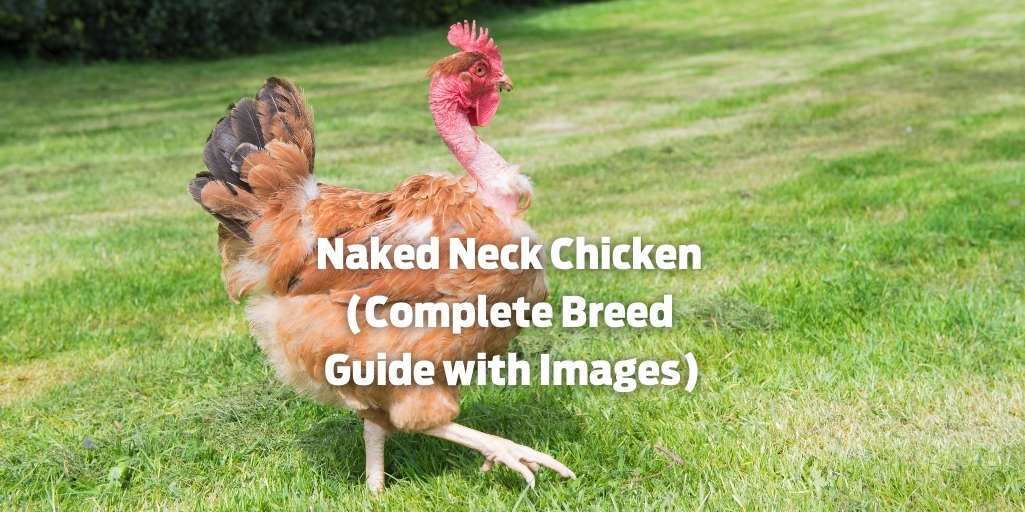
Curious about heat stress of these chickens. Do they need conditioned air during hot/dry summer months.?.
Hi, K. Richards
No, Lavender Orpington chickens might not necessarily need air conditioning, it’s important to take steps to ensure their comfort and safety during hot summers. Providing shade, proper ventilation, access to water, and possibly implementing other cooling methods can go a long way in preventing heat stress.